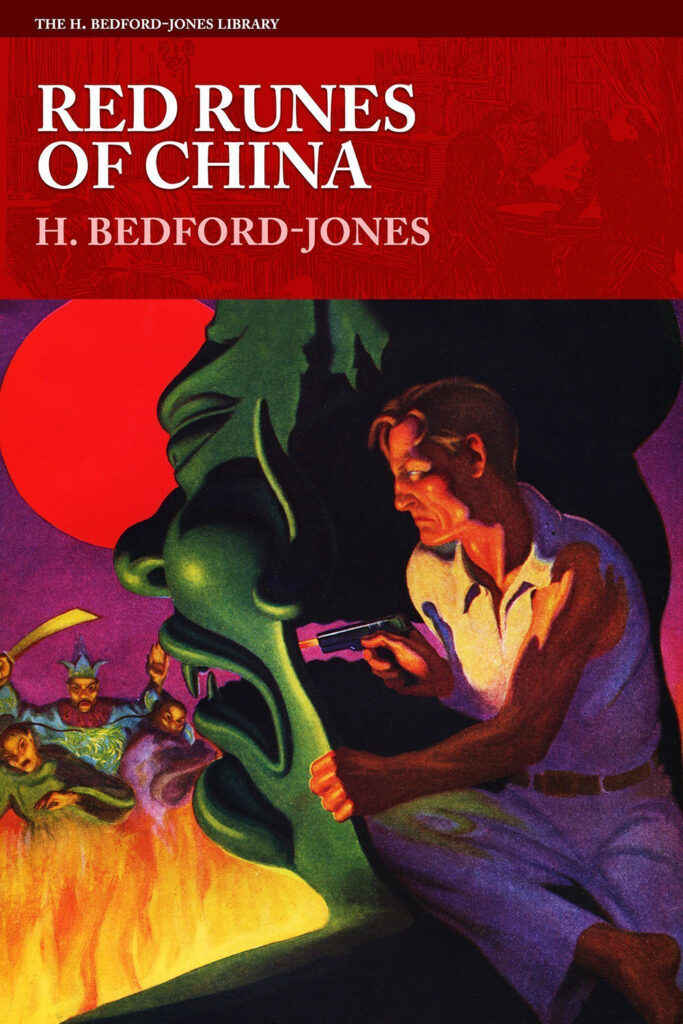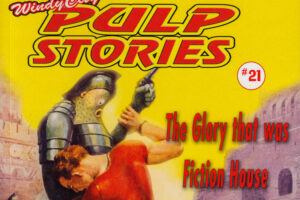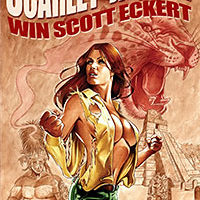Having read several H. Bedford-Jones (1887-1949) works, I approached Red Runes of China as it being another adventure tale set in China (duh), with the hero (and maybe others) in search of a treasure or the like, using the “red runes” to find them. However, once I started into this six-part serial, I quickly found that it is instead a crime thriller set in California, with the mastermind villain being an American as well. Chinese runes do play a big part, and many of the criminals are Asian, so it’s not what I expected.
 But it’s another interesting read from the “King of Pulps.”
But it’s another interesting read from the “King of Pulps.”
It originally appeared in Short Stories for six consecutive issues in 1924 and is reprinted in Steeger Books‘ “H. Bedford-Jones Library.” The reprint’s cover is from the July 25, 1932, Short Stories, as none of the stories were cover featured.
We quickly meet the hero of this tale, Dick Clews (?), a former star athlete, soldier of fortune, and officer in the Chinese Army. He can speak and understand Chinese languages, but not the writing. He is now working as a reporter for a local paper in San Francisco.
While doing so, he meets an old comrade from his time in China, Lew Friedman. A former government advisor and college professor, Friedman knows all about China. Clews moves in with Friedman, who is disabled due to a back injury, as they each have no other friends. This will prove valuable.
Shortly after, Clews is called in about a diamond robbery. An elderly couple are tied up, and the diamonds held by the husband, a diamond dealer, have been stolen. The only clue, overlooked by the police, is a piece of paper with a Chinese rune on it. Clews takes it to Friedman, and it’s good that he did. Friedman notes the paper is very fine silk paper, and the rune has a meaning that may indicate its use as a code. Friedman realizes that the person behind it all is an American named Harpey who had gone to China as a missionary, but turned bad, becoming a criminal mastermind with a deep knowledge of China. He is so dangerous that Friedman wants no mention of himself in any article Clews may write about the crime.
But after figuring out the rune and understanding that the crooks may try to leave via boat, Clews gets with a police detective, and they figure out which one. Clews runs into a beautiful woman, Claire Maynard, who is somehow involved. Harpey gets away, but they are able to grab the crooks who took the diamonds, along with the diamonds. But in a twist, later the police detective who took credit for the capture is gunned down outside his home! Clearly, Harpey is not a man to be crossed.
Clews wants to bring Harpey in and get Maynard out of his clutches. Friedman will help with his knowledge, as long as his involvement is kept secret. Clews approaches the detective’s partner, Terry Sullivan, to see if he will help out. He is more than willing, having taken a month’s leave. Clews has recently been fired from the newspaper. Thus we have Clews leading a small group going up against Harpey. But Harpey is a dangerous foe. Can Clews get Maynard out of his clutches? Will she put herself in danger for supplying Clews with information? Will Friedman come to danger, as he is disabled and can’t defend himself?
Thanks to the information supplied by Maynard, which Friedman is able to unravel, Clews and Sullivan, with other police, are able to thwart various schemes engineered by Harpey. Harpey is trying to get them as well. They are working to get closer to stopping Harpey himself.
This was a great read. The mystery of the runes was great, as we are told what they mean. I do hope it was accurate. There are twists and turns and dangers several times. As a crime thriller rather than an Asian adventure, it’s still a great tale. Some may be turned off by the language at time. Terry ‘speaks’ in a sterotypical Irish style, and sometimes uses terms modern audiences won’t like. The work is a product of its time.



